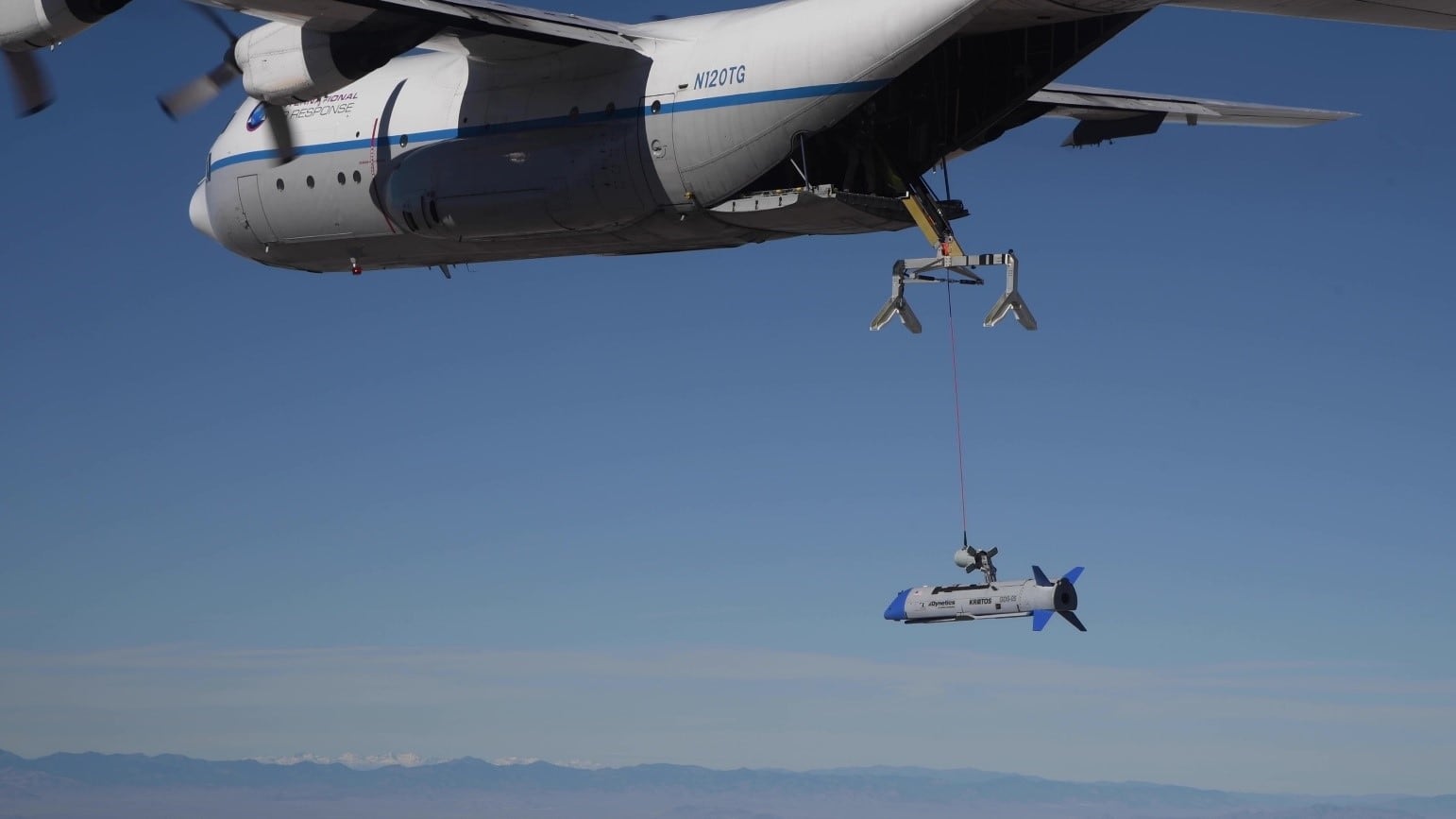Correction: A previous version of this story misidentified the number of Gremlin drones involved in the test flight. Three of the systems flew during the event.
WASHINGTON — For the first time, the Defense Advanced Research Projects Agency recovered an unmanned X-61 Gremlin air vehicle to a C-130 in flight, marking a milestone in the U.S. military’s effort to deploy swarms of drones from a mothership.
The first successful midair Gremlin recovery took place Oct. 29 at Dugway Proving Ground in Utah, DARPA said in a Friday release. During this flight test — the fourth deployment of the Gremlins — two of the small drones successfully carried out all formation flying positions and safety features before one was successfully recovered, DARPA said.
A third Gremlin was destroyed during the flight tests, DARPA said.
The Gremlins team then refurbished the recovered drone and flew it again within 24 working hours, the release said.
DARPA hopes the program — named for the imaginary, mischievous creatures that World War II-era pilots blamed when their aircraft or equipment malfunctioned — will one day allow the military to launch groups of small sensor-laden drones from bombers, cargo planes or smaller aircraft such as fighters.
DARPA envisions the motherships will stay out of range of enemy defenses, but the drone swarms would fly into danger and conduct missions such as intelligence, surveillance, reconnaissance or electronic warfare.
After the mothership collects the drones and brings them back to base, ground crews would get them ready for another flight within 24 hours, DARPA said in a 2018 report.
The agency hopes each drone would have a lifetime of 20 flights. The agency said flying these relatively disposable drones would allow the military to accomplish missions much more cheaply and with less maintenance efforts than relying on nonexpendable systems meant to fly for decades.
“This recovery was the culmination of years of hard work and demonstrates the feasibility of safe, reliable airborne recovery,” Lt. Col. Paul Calhoun, the Gremlins program manager in DARPA’s Tactical Technology Office, said in the release. “Such a capability will likely prove to be critical for future distributed air operations.”
Previous attempts to conduct airborne retrievals of the Gremlins were unsuccessful. In October 2020, DARPA kicked off a series of flight tests in which it tried, but failed, nine times to recover three Gremlins. DARPA said at the time those attempts were each inches away from working, and all Gremlins safely parachuted to the ground.
DARPA released a video of the successful recovery that showed the Gremlin latching into a docking bullet that extended from the C-130, folding its wings into its body and then being gripped by a recovery arm that took it into the C-130.
This time, four flights were conducted, during which hours of data — including information on air vehicle performance, how contact worked during the airborne retrieval, and the aerodynamic interactions between the Gremlin and the C-130′s recovery bullet — were collected, the release said.
“Airborne recovery is complex,” Calhoun said in the release. “We will take some time to enjoy the success of this deployment, then get back to work further analyzing the data and determining next steps for the Gremlins technology.”
The Gremlin drones are made by Dynetics, a subsidiary of Leidos.
Stephen Losey is the air warfare reporter for Defense News. He previously covered leadership and personnel issues at Air Force Times, and the Pentagon, special operations and air warfare at Military.com. He has traveled to the Middle East to cover U.S. Air Force operations.







